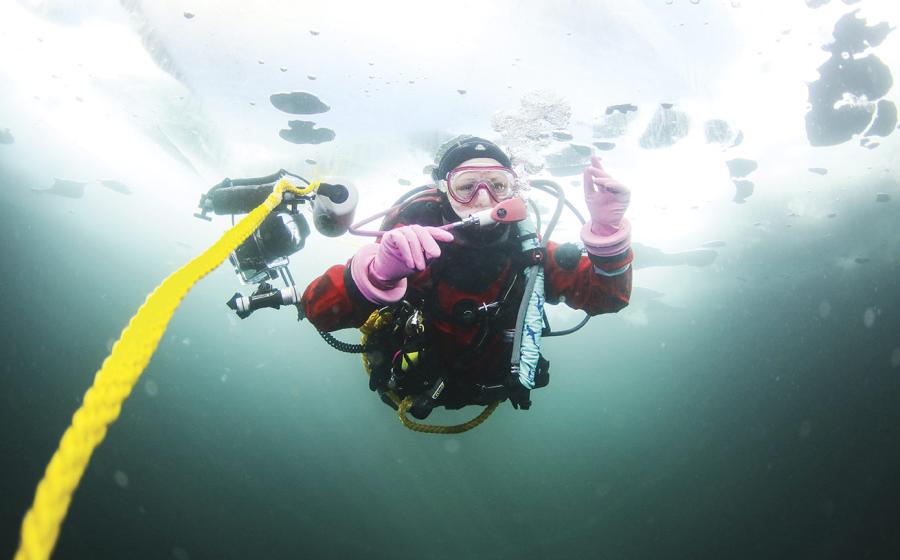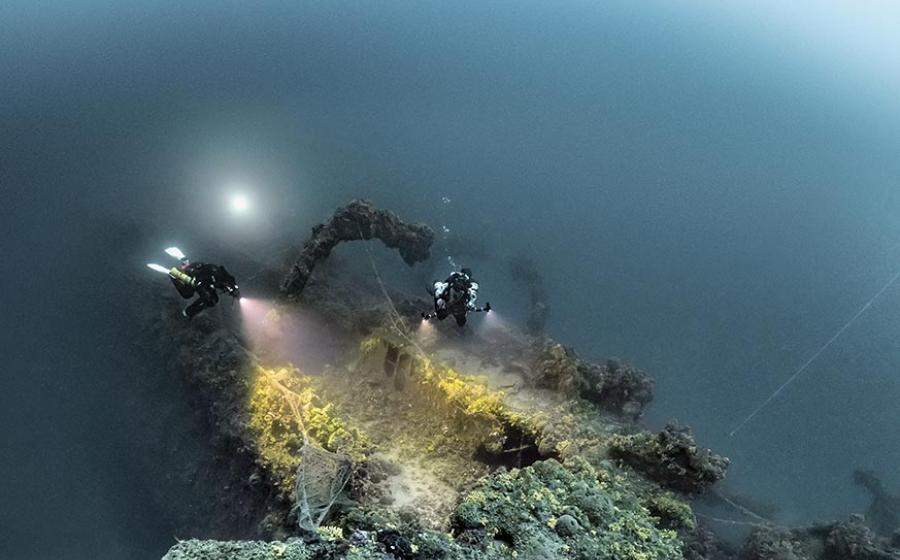Canada
British Columbia

The Westernmost province of Canada dishes up dives of large proportions, and once you brave the cold water-mid-40 degrees year-round-you will agree this is an experience like nowhere else on earth. Pods of orcas, playful sea lions and white-sided dolphins come to surf some of the strongest tidal currents in the world, which sweep into the straits and sounds that surround Vancouver Island. Dives around small islets begin at slack tide, featuring sheer rock walls below surface that are packed with bizarre marine life. Ghostly white plumose anemones grow in thick fields and host many varieties of nudibranchs, the notoriously ugly, friendly wolf eels, giant Pacific octopuses, urchins and starfish. In this dog-eat-dog world below the surface chop, it's survival of the fittest, and divers have a front-row seat.
Dive In
Weather: Air temperatures vary dramatically, with summers reaching daytime highs in the 70s and winter lows dipping to the 30s.
Average Water Temp: Temperatures warm to the 60s on the surface, but the underlying water temperature remains a steady mid-40 to 50 degrees year-round. Dry suits are a must.
Average Visibility: Visibility is best from late summer through winter, as the increase of sunlight in the springtime brings thick algae blooms. Water clarity varies greatly by region, and is affected by currents, river deposits and runoff from heavy rainfall. It can reach 100 feet in places.
Travel Savvy: Until December 2006, U.S. citizens don't need a passport or visa to visit British Columbia, but need proof of citizenship and a photo ID. There is a $20 airport improvement fee for U.S. citizens ($30 for other foreign visitors).
Destination Links: www.travel.bc.ca, www.dive.bc.ca, www.bcdiveguide.com.
British Columbia

The Westernmost province of Canada dishes up dives of large proportions, and once you brave the cold water-mid-40 degrees year-round-you will agree this is an experience like nowhere else on earth. Pods of orcas, playful sea lions and white-sided dolphins come to surf some of the strongest tidal currents in the world, which sweep into the straits and sounds that surround Vancouver Island. Dives around small islets begin at slack tide, featuring sheer rock walls below surface that are packed with bizarre marine life. Ghostly white plumose anemones grow in thick fields and host many varieties of nudibranchs, the notoriously ugly, friendly wolf eels, giant Pacific octopuses, urchins and starfish. In this dog-eat-dog world below the surface chop, it's survival of the fittest, and divers have a front-row seat.
Dive In
Weather: Air temperatures vary dramatically, with summers reaching daytime highs in the 70s and winter lows dipping to the 30s.
Average Water Temp: Temperatures warm to the 60s on the surface, but the underlying water temperature remains a steady mid-40 to 50 degrees year-round. Dry suits are a must.
Average Visibility: Visibility is best from late summer through winter, as the increase of sunlight in the springtime brings thick algae blooms. Water clarity varies greatly by region, and is affected by currents, river deposits and runoff from heavy rainfall. It can reach 100 feet in places.
Travel Savvy: Until December 2006, U.S. citizens don't need a passport or visa to visit British Columbia, but need proof of citizenship and a photo ID. There is a $20 airport improvement fee for U.S. citizens ($30 for other foreign visitors).
Destination Links: www.travel.bc.ca, www.dive.bc.ca, www.bcdiveguide.com.






